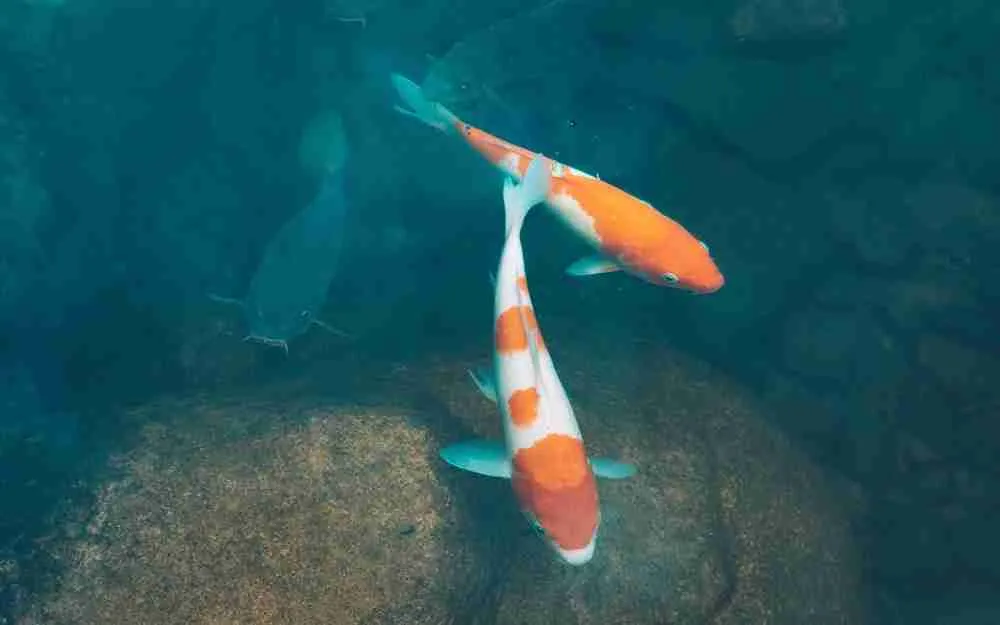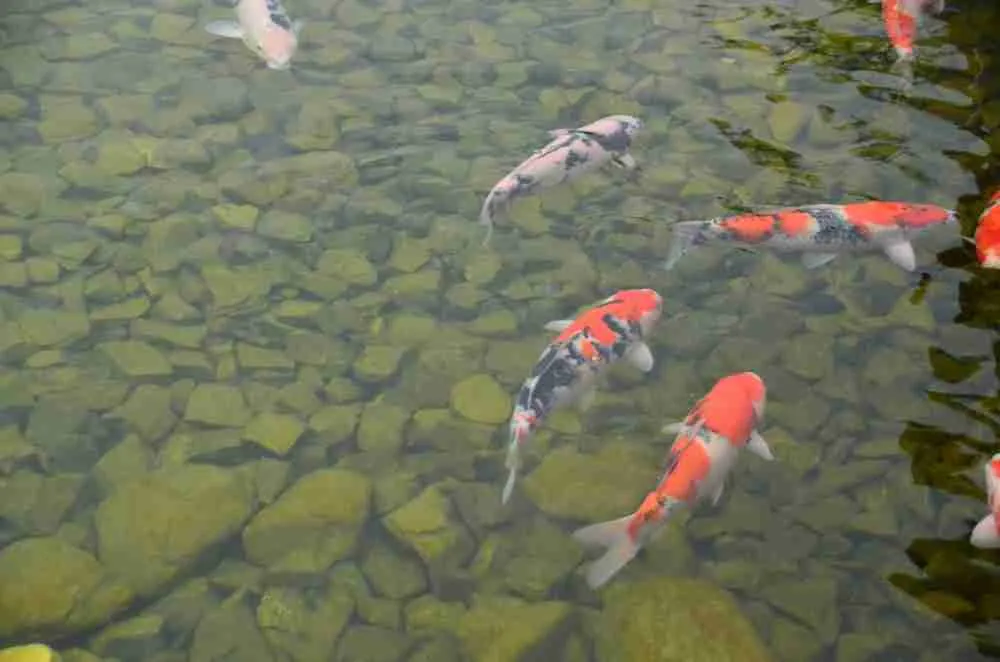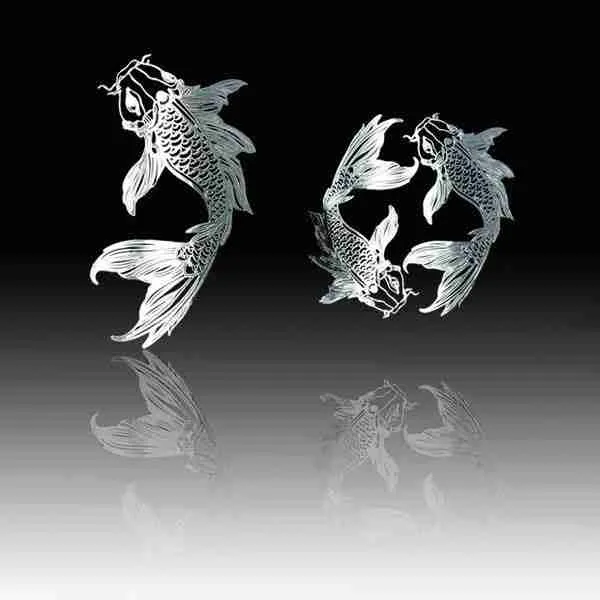What is the Koi fish, what makes it very special, and is it symbolic in Chinese?
If you find Chinese culture intriguing, especially the symbolism behind many things in Chinese, it might be time for you to learn about the Chinese Koi fish, and this article breaks down all you need to know about this legendary Chinese fish.
What Is Koi Fish In Chinese?

Koi fish, also known as Nishikigoi in Japanese or the brocaded carp in the marine sciences world, refers to one of the most colorful, legendary, and valuable fishes in Chinese and Japanese cultures. The Koi fish belongs to the same fish category as the other colored fish varieties from the Amur Carp family. The fish is often kept in the outdoor koi ponds or the water gardens, primarily for decorative purposes.
But the Koi is not just ornamental, this fish is deeply meaningful, which is why it fetches a high price on the market, and koi fish tattoos are considered deeply meaningful.
You also need to know that this brightly colored type of freshwater fish is mostly used in different Asian landscapes, as well as design and even in Chinese Feng Shui, where the different colored fish have different meanings.
Why Are Koi Fish So Expensive?
The highest-quality koi fish are the ones that will be found in the market. But the main reason why the Koi fish are very expensive has to do with the fact that the fish are in very low supply while the demand for the fish is extremely high. Finding the fish with the best color features and the right size is also a challenge that increases the cost of the fish significantly.
Koi fish are mostly raised in ponds, and the cost of raising and taking care of the fish is quite high, and this leaves you with the most expensive fish on the market.
Types Of Koi Fish

There are 13 main types of Koi Fish which are distinguishable by the scales, the coloration, and the patterns on the fish, although it is believed that there are at least 100 types of Koi fish.
Koi fish are colored Cyprinus rubrofuscus fish, and despite the differences in the types, the fish are mostly found in blue, red, white, yellow, black, and the color cream.
The main types of Koi fish are as follows:
- Kohaku – this is the very first koi fish to have developed, and it is why the Kohaku is regarded as the king of all the koi fish. It is majestic even in its simple beauty, and it is a favorite choice for koi ponds and aquariums. It has a yellowish nose with red blotches that cover it against the white that makes up the rest of the fish.
- Taisho Sanke – Also called Sanke, this koi fish variety has three colors – red, white, and black. It is one of the Big 3 for Koi fish.
- Showa – the Showa is also called the Showa Sanshoku. Sanshoku is Chinese for three colors, and the Showa koi fish gets its name from the three colors on its body; red, white, and black, like the Sanke. Unlike the Sanke, its Karasu or the black part of the fish is different and mostly black. The red and white colors mostly cover the black base for the fish’s body.
- Tancho – this koi fish has a prominent red spot on the head, and the rest of the body is silver/ creamish. It gets the name from Tancho Crane, Japan’s national bird.
- Utsuri – This koi fish is from an entire category of Koi fish called the Utsuru, and Utsurimono refers to a reflection. The fish has a black body with red, yellow, or white markings.
- Bekko – this Koi fish is also an Utsuri with a black base and markings in white, yellow, or red. The Bekko’s head has no black or Sumi markings. The Bekko can be a Shiro Bekko, Ki Bekko, or Aka Bekko meaning, white, yellow, or red body, respectively.
- Asagi – this is a striking koi fish whose beauty is heralded by the blue, net-like pattern at the top of the body, and the red-orange coloring of the gill plates, fins, belly, and the rest of the body. The red coloration spreads upwards on the fish’s body as it ages.
- Shusui – It’s a type of the Asagi Koi, and it has no scales on the top part of the body and also no blue net patterns. It only has scales that form a row along the dorsal line.
- Koromo – this is a white-colored koi fish with red-orange patterns throughout the body, as well as scaly patches. The main types of Koromo Koi include Aigoromo, Sumigoromo, and Budogoromo.
- Goshiki – This koi fish has 5 colors, including a solid white body, with a black-blue net pattern that spreads throughout the body. It’s the result of breeding between Kohaku and Asagi. Other colors seen are red and red-orange.
- Kawarimono – this koi fish makes up the fastest-growing and largest koi fish variety. Types include the Hajiro, Hageshiro, Komunryu, and Ochiba Shigure.
- Hikari Muji – this fish has a rather metallic or shiny appearance, and it shimmers. It only has one color.
Koi Fish History
The Koi fish is not only legendary but also vibrant, graceful, and the most popular fish world. The fish are also quite respected and well-loved. But how did they come to be?
Well, while the Koi fish are associated with Japan to a large extent, they actually originated from China, or more specifically, Central Asia, and were only introduced to Japan by the Chinese invaders.
The koi fish got their name in 500BC, although they have been around for much longer, with fossils of the koi fish dating back 20 million years. It is believed that the spectacular colors that the koi fish are known for are a result of genetic mutations that have taken place over the years, naturally.
The earliest account of people keeping the fish for aesthetics went back to the early 1800s when the Japanese farmers started keeping the fish.
And though the fish were initially kept for aesthetics, they are now a huge part of Chinese culture, and they are also very symbolic.
One tale of how the Koi fish became popular is known as the Waterfall Legend. This is an ancient tale that shares the story about a large school of the golden koi fish that were swimming upstream of China’s Yellow River. During the upward swim, it is believed that the fish gained significant strength as they swam against the current, but reaching the waterfall at the end of the river, most of the fish turned course, and the flow of the river would carry them. Some of the fish didn’t give up, and despite their efforts to reach the top of the waterfall, they didn’t make it up. However, the local demons noted their effort and even mocked the lone fish, but after 100 years of jumping, it finally reached the top of the waterfall, and the gods recognized the koi for their determination and perseverance, turning the koi into the golden dragon that is the image of strength and power.
Koi Fish Symbolism Chinese

In Chinese, koi fish symbolizes positivity, and they are considered to be powerful symbols of perseverance and strength.
The bravery and strength seen in the fish swimming upstream is now one of the things that are associated with Japan’s Samurai Warriors. The fish also represent a great sense of character and integrity, which is why they are a popular choice in tattoos.
But that is not all. The koi fish are known for their power and the energetic life force demonstrated by the upstream swim. These actions have led to the associations of the Koi fish with good fortune, prosperity, success, courage, longevity, ambition, and perseverance.
- Yin Yang Koi Fish Meaning
The black and white or yin-yang koi fish represent a balance between good and bad, harmony and duality of life. The Yin Yang koi represent two koi, one being male and the other female. The teardrop symbol on each fish symbolizes the koi’s watchful eye, and the pair represents good luck for happy marriages.
- Black Koi Fish Symbolism
The black koi or the Kumonryu black koi fish symbolize life transformations and changes.
- White Koi Fish Meaning
Also called the Kuchibeni koi fish, the white koi fish represents long-lasting relationships and love.
- Blue Koi Fish Meaning
Blue koi is a masculine fish that is often associated with fertility or reproduction. The blue and white koi fish symbolizes the son in the family. Blue also symbolizes tranquillity, peace, and calm.
- Red Koi Fish Meaning
Red koi symbolizes deeply passionate love. And the red koi represent the mother in the family. Red or pink koi symbolize a daughter. The Red koi could also be the symbol of bravery and power.
- Purple Koi Fish Meaning
The purple koi fish is a symbol of perseverance
- Orange Koi Fish Meaning
The orange koi also symbolizes the mother or motherhood. But in other cases, the orange or gold koi fish represents fortune, prosperity, and wealth.